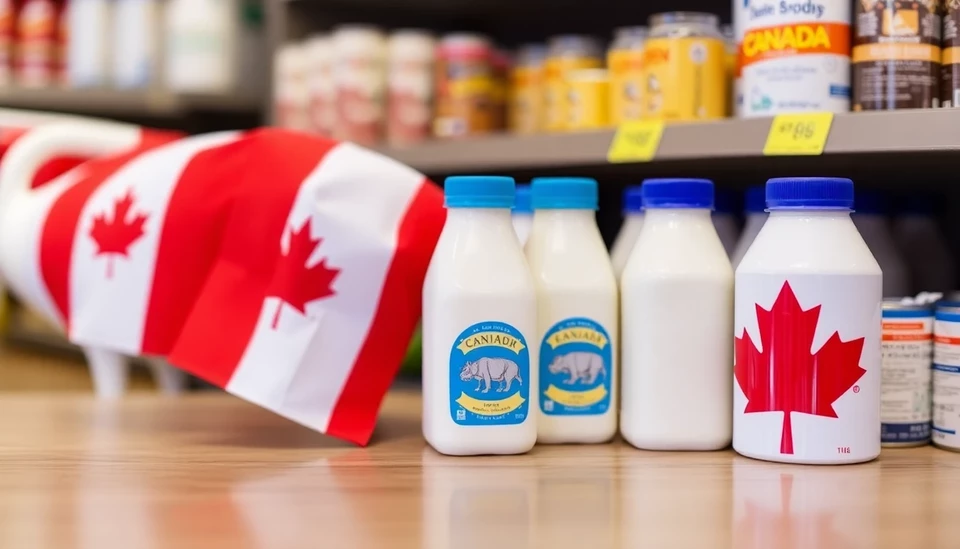
In a significant move that could reshape North American trade relations, Canada has enacted a new tariff of 300% on select U.S. dairy products, particularly milk. This decision, aimed at safeguarding local dairy farmers, has sparked outrage among American producers and has raised questions about the implications for both Canadian consumers and the dairy market as a whole.
The tariff is part of Canada's broader strategy to support its domestic agriculture sector, which has been strained by various market pressures, including competition from U.S. dairy exports. The Canadian government argues that this high tariff rate is essential to maintain price stability for its local farmers, who have long faced challenges from imports that threaten their livelihoods.
On the other hand, U.S. dairy producers are fuming over the tariff, asserting it will lead to higher prices for consumers and limit choices in the market. The North American Free Trade Agreement (NAFTA) and its successor, the United States-Mexico-Canada Agreement (USMCA), were both designed to facilitate trade between these nations, and this move appears to diverge from those objectives.
The immediate repercussions of the tariff have stirred concern among stakeholders in the dairy industry. Many fear this could lead to retaliatory measures from the U.S. government, potentially escalating trade tensions that have been simmering due to other disputes. The dairy industry represents a significant aspect of the U.S. agricultural landscape, and dairy farmers in the States have already expressed worries about the long-term impacts on their operations if these tariffs remain in place.
Canadian consumers, meanwhile, can expect changes in the dairy aisle. With the imposition of such steep tariffs, imported dairy products likely will become significantly more expensive, leading to higher prices for consumers. Analysts have predicted that Canadian shoppers might have to adjust to a reduced selection of dairy products as suppliers shift their focus more heavily towards domestic sources.
This move has reignited discussions surrounding trade policies and the balance between protecting local industries and maintaining free trade. Critics of the tariff are calling for diplomatic solutions rather than punitive measures, highlighting the interconnected nature of the U.S.-Canada trade relationship. There are hopes that negotiations could lead to a resolution that would allow for more reasonable tariffs that can support local farmers while still permitting fair competition.
As the situation develops, all eyes will be on both the Canadian and U.S. governments as stakeholders seek to navigate the complex landscape of international trade dynamics. The outcome could potentially open a wider dialogue about agricultural tariffs, market access, and the future of dairy trade across the border.
In summary, Canada's initiative to impose a dramatic 300% tariff on U.S. milk and dairy products signifies not just a protective measure for local agriculture but also poses broader implications for trade relations between the two nations. The reaction from U.S. producers and the possible responses from policymakers will be crucial in shaping the future of cross-border dairy trade.
#Canada #USTrade #DairyTariff #Agriculture #USMCA #InternationalTrade #MilkPrices #TradeRelations #ConsumerImpact
Author: Laura Mitchell




